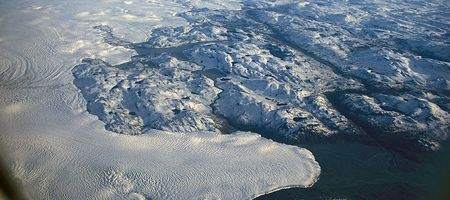The planet’s two largest ice sheets are melting faster then ever before – three times as fast as they were just 20 years ago.

“In the 1990s, not very much was happening,” says Benjamin Smith of the University of Washington’s Applied Physics Laboratory. “Sometime around 1999, the ice sheets started losing more mass, and probably have been losing mass more rapidly over time since then.”
In their study, billed as being the most accurate ever, dozens of climate scientists have reconciled their measurements of ice sheet changes in Antarctica and Greenland over the past two decades. The results roughly halve the uncertainty and discard some conflicting observations.
“We are just beginning an observational record for ice,” says co-author Ian Joughin, a glaciologist in the University of Washington’s Applied Physics Laboratory. “This creates a new long-term data set that will increase in importance as new measurements are made.”
The team examined three methods used by separate groups in the past and established common places and times, allowing some outlying observations to be discarded and showing that the results of all three agree.
The first method takes an accounting approach, combining climate models and observations to tally up the ice gain or loss. The other two use specialized satellites to measure the height and gravitational pull of the ice sheets and calculate how much ice is present.
It’s the first time all three methods have been applied to the same times and locations.
Since 1998, scientists have published at least 29 different estimates of how much ice sheets have contributed to sea-level rise, ranging from 1.9 mm a year to 0.2 mm drop per year.
The new, combined estimate is that ice sheets have since 1992 contributed on average 0.59 mm to sea-level rise per year, with an uncertainty of 0.2 mm per year. Overall sea levels have risen by about 3.3 mm per year during that time period, much of which is due to expansion of warmer ocean waters.
“Establishing more consistent estimates for the contribution from ice sheets should reduce confusion, both among the scientific community and among the public,” says Joughin.
What’s still not clear is why the ice sheets have been shedding mass faster in the last decade, as the acceleration wasn’t predicted by the models.







